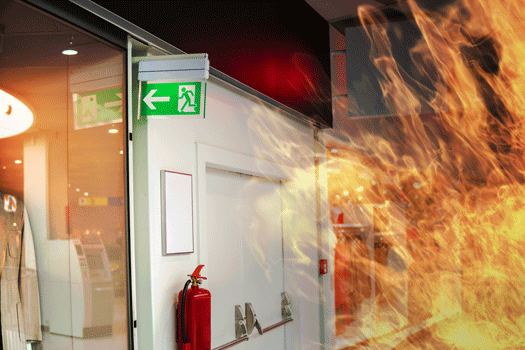We use cookies to make your experience better. To comply with the new e-Privacy directive, we need to ask for your consent to set the cookies. Learn more.
OSHA Fire Prevention Plan Requirements
According to the Occupational Safety and Health Administration, some employers, though not all, must maintain an official written fire prevention plan at all times. The key rule here is OSHA standard 1910.39, which states that "an employer must have a fire prevention plan when an OSHA standard in this part requires one." The standard goes on to list the minimum elements that the fire plan must contain.

How can an employer tell if OSHA requires their business to create a fire prevention plan? The answer is in the above quotation, along with the broader list of OSHA rules included in section 1910, which lists regulations concerned with general industry.
The following regulation subparts of standard 1910 do require employers to maintain an OSHA-compliant written fire prevention plan:
-
Standard No. 1910.1047: Ethylene Oxide.
Read the standard here.
-
Standard No. 1910.1050: Methylenedianiline
. Read the standard here.
-
Standard No. 1910.1051: 1,3 Butadiene.
Read the standard here.
Note that even industries that don't work with the above hazardous substances often must provide fire extinguishers, smoke detectors, and other elements of a broader fire prevention plan. For instance, standard 1910.178(g)(2) requires forklift battery rooms to include areas to "be provided for flushing and neutralizing spilled electrolyte, for fire protection, for protecting charging apparatus from damage by trucks, and for adequate ventilation for dispersal of fumes from gassing batteries" (our emphasis).
Elements of the OSHA Fire Prevention Plan
When OSHA does require employers to keep a written fire prevention plan, that plan must include, at minimum, the following elements:
- Employers with 10 or fewer staff members can convey the plan verbally, without the written component. For all other workplaces, employers must supply written copies for review by any employee.
- The plan must list out all the significant fire hazards that exist within the facility, including hazardous materials and potential ignition points.
- In addition to listing these hazards, the plan must provide proper procedures and equipment to control them if they do cause a blaze.
- Procedures in the plan must also include controls for all flammable wastes and maintenance for equipment designed to safeguard the heat caused by machinery and other workplace infrastructure.
- The plan must designate, by name or job title, particular employees responsible for maintaining equipment and overseeing the control of ignition sources.
- Similarly, the plan must include names or job titles for staff members in charge of protecting potential fuel sources.
When OSHA requires employers to post such a plan, the agency also mandates that they inform incoming employees of the existence of fire hazards before they begin work. The employer must also review sections of the plan associated with the employee's tasks.
To learn more about OSHA fire prevention plans, see the appropriate eTool, available here.
References:
"29 CFR 1910.49: Fire Prevention Plans." OSHA. Occupational Safety and Health Administration, United States Department of Labor, n.d. Web. 28 Aug. 2018.
"Evacuation Plans and Procedures eTool." OSHA. Occupational Safety and Health Administration, United States Department of Labor, n.d. Web. 28 Aug. 2018.
"OSHA Fact Sheet: Fire Safety in the Workplace." OSHA. Occupational Safety and Health Administration, United States Department of Labor, n.d. PDF. 28 Aug. 2018.
